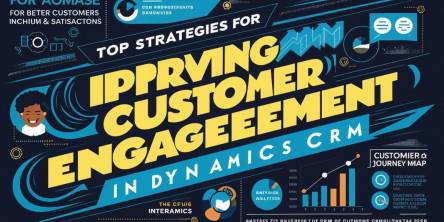Top 5 Data Integration Tools for Small Businesses to Big Enterprises

Every small and large enterprise require some actionable insights to grow their business. Moreover, to get such ideas, it is necessary to gather the data from various sources that stored in different technology platforms. A data integration process combines the data from multiple systems and extracts the relevant information. It helps companies to deal with big data without any hassle. However, it is vital to choose the right data integration tool depending on the type of data, formats, and industries.
The data integration tool transforms the vast amount of structured and unstructured data into informative, knowledgeable, and actionable insights. Such information helps you to get the full picture of the working and performance of your business and which efforts are working in driving industry profits. However, as there are a plethora of data integration tools available, it is challenging to find the perfect solution for your company. This article covers the most renowned data integration tools that will help you to pick up your option in a much faster time.
-
ODI (Oracle Data Integrator)
The ODI is a Java-based extremely flexible tool which works best for the big data integration for enterprises. It is designed as an ELT (Extract, Load, and Transform) tool; you can perform the transformation step either at the source or at the destination database as you want. It improves performance and reduces data integration costs, even for the heterogeneous systems.
Features:
-
Oracle Data Integrator contains a wide variety of pre-built integrations & connectors.
-
The lightweight designer of the web application helps to manage data integration task conveniently.
-
It offers service-oriented data integration & management for SOA environments.
-
-
Microsoft SQL Server Integration Services (SSIS)
The Microsoft SSIS is an enterprise data integration, transformation, and migration tool. It can extract, transform, and merge the data from various relational databases, XML data files, flat files, and other sources. This tool is cost-effective, flexible, and extensible, which you can integrate with other Microsoft add-ons and tools.
Features:
-
It has a graphical easy-to-use interface that helps users to deploy data warehousing solutions without writing code.
-
Along with ETA challenges, it can also do DBA activities, scripting, calling .exe files, and more.
-
You can deploy it on-premises or in the cloud. However, if you use Azure integration services, then it will work on the cloud only.
-
-
Dell Boomi
The Dell Boomi AtomSphere has robust data integration and management capabilities. This iPaaS (integration Platform as a Service) platform connects multiple applications and data across clouds and legacy systems. It is one of the best cloud-based data integration tools on the market, which helps organizations to reorganize their data silos into useful business insights.
Features:
-
Users can set up the data integration across different components on the data systems on-premises or in the cloud and can connect them into a ‘molecule’ for high availability.
-
It has a visual, drag-and-drop interface which helps users to integrate data repositories from multiple vendors easily.
-
It allows to automate complex data integrations and get real-time updates.
-
-
Informatica PowerCenter
Informatica PowerCenter is a leading enterprise data integration platform. It jumpstarts and accelerates complex data integration projects to deliver useful business insights quickly. This powerful tool follows a metadata drives approach to provide data mapping, input, transformation, and output functions.
Features:
-
The role-based tools and agile process helps to deliver data integration initiatives on time with accuracy.
-
Its automatic error logging and early warning features enable to detect problems at their early stage during the data integration process.
-
It provides relevant and timely data through its next-gen analytics function for operational efficiency.
-
-
Talend
The Talend data integration solution offers an open & scalable architecture that responds faster to business requests. It has a straightforward user interface that comes with excellent support for Hadoop in the integration process. The Talend Open Studio is available in free and commercial versions.Features:
-
It is perfect for the integration of software on any platform like Azure, AWS, Google, and more.
-
Talend is five times faster than MapReduce programming model.
-
It supports a vast number of functions without scripting and contains more than 450 software applications and tools.
-
Talend Open Studio can work on both the on-premise and cloud-based platforms.
-
It runs on Linux, Windows, OS X systems.
-
A robust data integration tool enables you to make connections between different data sources, systems, and applications without any hassle. Each of the data integration tool mentioned in this list has some overlapping and some unique qualities. You can easily pick up the most suitable device depending on your organization size, type of data and its use, your working sector (government, healthcare, or any other specialization), and the budget.
Similar Articles
The global market now firmly acknowledges that software has become integral to almost every facet of our lives, especially considering the technology-driven world in which we now live. No matter if they are the social media apps we use to stay connected to friends and family or the sophisticated systems that drive business operations -- we lean on different software every single day
In today’s software development and increasingly agile environments, continuous integration (CI) has proved to be a critical best practice that comprehensively applies to QA testing. Continual integration helps provide the necessary steps to ensure that the new code can be integrated with the rest of the software products' code base to be developed in an effective environment that is as error-free as possible.
The global healthcare sector has been embracing digital solutions for a while now. But to what end, one may wonder? Well, simply put, the sector has been quick to integrate digital solutions to help enhance the quality of patient care and operational efficiency.
The retail sector has been subject to continuous advancement thanks to the changing needs and demands of consumers. And it is also a well-known fact that shopping experiences have and must mirror technological and societal advancements. Today, customer expectations are unequaled, demanding consistent and customized experiences across different platforms.
Virtual Hard Disk (VHD) files play a role as they store all the data for a virtual machine. If these files get damaged or mistakenly deleted it can have repercussions, impacting not data integrity but also operational continuity.
Corporate transparency is essential in building stakeholder trust and credibility in today's evolving business environment. As businesses grow and adapt to changing regulations, ensuring adherence to rules and maintaining records has become increasingly intricate.
Among the solutions developed over the past few decades, Salesforce Financial Services Cloud (FSC) has emerged as the definitive choice for gaining flexibility, visibility, and long-lasting, inclusive growth in the financial sector.
Open source software (OSS) is distributed with its source code, which means it can be distributed, modified, and used freely with the original rights. Most users never see the source code, a critical part of the software.
It's one of the keystones, basic but key in the successful highly competitive modern business environment, where the connection with the customer is a must.









